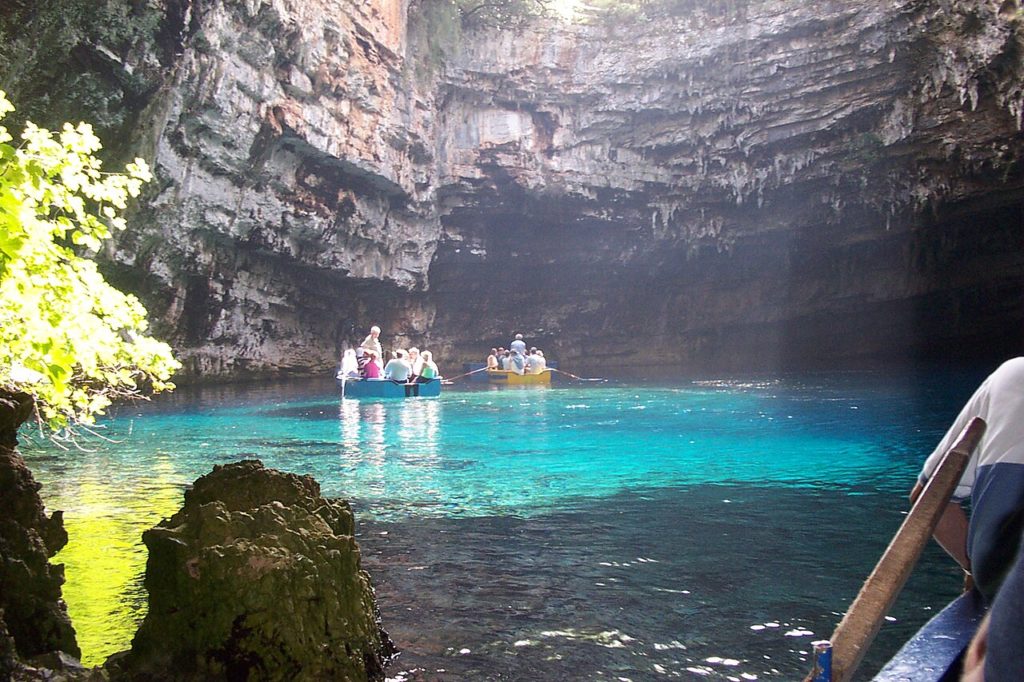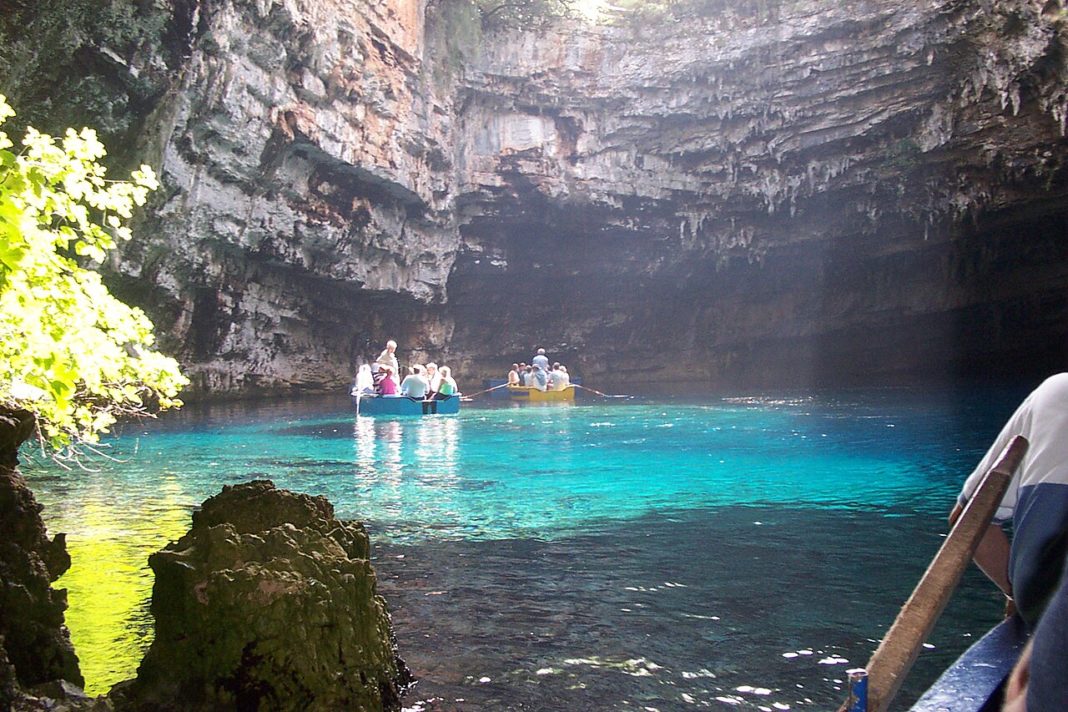Melissani Cave or Melissani Lake, also Melisani is a cave located on the island of Kefalonia. In Greek mythology, Melissani was the Cave of the Nymphs. It features a lake surrounded by trees and forest and is located east of the mountains of Evmorfia and Agia Dynati.

The cave is B-shaped, with two chambers or halls separated by an island in the center. The first chamber is sun-lit while the second is dark and has many stalactites covered with algae and moss. Even though big in size, they are dwarfed by the huge dome. Surprisingly, many of the stalactites resemble dolphins, the companions and messengers of the nymphs. This chamber is lit with electric lights.

The roof of one of the halls caved in centuries ago, letting sunlight filter in. The depth of the lake is 20 to 30 meters. When the sun is right overhead at noon, the sunlight hitting the turquoise-blue waters creates a magical illusion and the whole Cave of Melissani suddenly feels lit with blue light.

Melissani cave is a typical feature of the karst environment in a coastal carbonate aquifer. It forms a kind of cenote, as described in the Yucatán peninsula (Mexico). The vertical shaft gives access to the water table (where you can do a round trip on a small boat). This groundwater is brackish, mixing between freshwater recharge inland and seawater intruded in depth in the island. Huge karst conduits have been explored by speleo-divers.

The bay of Sami has many cenotes, with impressive shafts. The brackish water flowing through the cenotes outflows along the seashore, forming brackish coastal and submarine springs. The groundwater of Melissani cave outflows at the “Fridi” beach. This brackish water is part of the famous hydrogeological phenomenon: seawater is sucked in the western part of the island of Kefalonia, near Argostoli, and expelled in the bay of Sami. In Argostoli, the seawater flows into sinkholes, named katavothres, where the water mill turns.
According to the Internet















